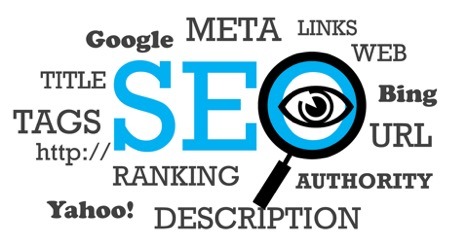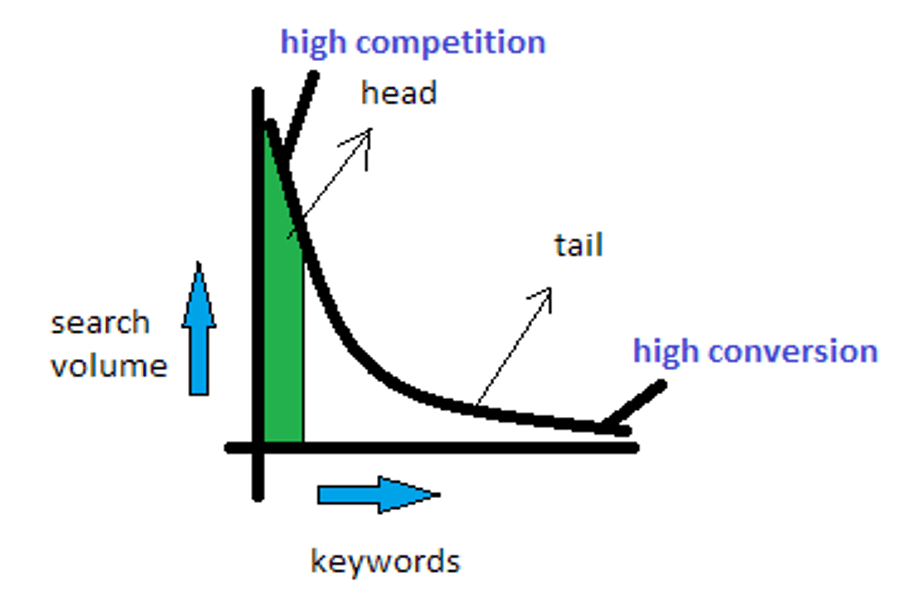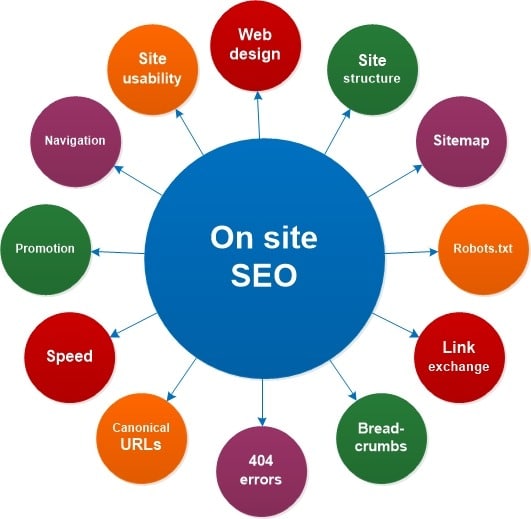Improve Your SEO
 Reading Time: 10 minutes
Reading Time: 10 minutes
Do you run an online business and use digital marketing? Are you planning your next startup to launch online? Then understanding and implementing an SEO strategy is vital for the long-term success of your business.
One of the most important elements within digital marketing is search engine optimisation, often referred to as SEO. Some of you may already be familiar with the term as it is thoroughly associated with online marketing. For those who are new and venturing into the digital marketing world for the first time, SEO may appear a bit complicated initially as many factors influence how well your website ranks in the search engine results pages (SERP).
So what is SEO? Search engine optimisation involves improving certain factors, both on your actual and website (known as on-site SEO) and factors away from your website (known as off-site SEO) and when improved, this then enhances your websites visibility and rankings on search engine result pages (SERP).

SEO consists of several elements like keywords, meta descriptions, inbound and outbound links, page speed and many more. In fact, there are over 200 factors that influence how your well your website ranks organically.
Here, in this article, we will discuss some of the important SEO techniques that can be used to help optimise your website.
Table of Contents
Long Tail Key Words – How To Take Advantage Of Them?
Keywords have one of the most vital contributions when it comes to optimising your digital content. Keywords or key phrases are basically the collections of words that users enter into a search engine when searching for information/products/services. You can reach your target viewers by choosing the right keywords and optimising your website around these words/phrases.
Now let’s throw the spotlight on rather critical analysis. When working on digital content creation you may come across something called long-tail keywords. What are these? Well, to simplify, long-tail keywords are keywords that have a higher number of words. These are a longer collection of keywords that help to specify your search option and can sometimes be seen as low hanging fruit when it comes to SEO.
For instance, if you need to buy pastel colours pencils for your child, what you do? You simply open Google and type “buy pastel colour pencils for children” – and you get served with a choice of relevant online shopping websites with a collection of pastel coloured pencils. This group of keywords that you just used is a long-tail keyword. If you had searched for only “pastel colours” instead, you would have ended up with a more varied search result that might not be useful.

However, you must understand the advantages of using long-tail keywords in your digital content. Here are a couple of examples:
• Enhances Specific Content Search
When you add long-tail keywords, you actually shorten the searching options. Therefore, you avoid getting lost amongst the noise so to speak. To simplify, here is an example. Suppose you own a website that sells “home-based gardening equipment”. Now if you use a generic keyword like ‘gardening’ you would fall under many profound competitors with other gardening sites. So for example, to avoid this you can use long-tail keywords like, “beginner tools for home-based gardening” that are very specific to your product, service or niche.
• Reduce Search Volume
Certainly, it reduces search volume, however the intent of the user increases, as generally speaking if you are searching with longer tail keywords you are looking for something more specific and are more engaged in your search. These searches are highly focused on keywords and are made up of such combinations or phrases that you don’t find generally. This acts as an advantage and can be a good thing for advertisers. It effectively reduces the amount of search’s the users have to perform while looking for a certain product/service.
• Attracts Buyers
As mentioned earlier, longer tail keyword search’s certainly favour more engaged users and as such, are more willing to purchase. Generally, only a buyer will search through more specific keywords rather than a user who is only browsing, hence, with long-tail keywords, you can increase conversions in an easier way.

Here is a graphical representation to elaborate further and provide you with a better understanding of how long-tail keywords work.
Short Tail Key Words – How To Rank For Them?
Your main objective is to optimise your content to that you rank on the first page of Google or Bing for your chosen short tail keyword. In doing this, short tail keywords consist of a lesser number of words and target a more general search. These keywords are often much more competitive to rank for and involve setting the general overall keywords for your website. This precise approach can take some time, depending upon the keywords and how competitive they are.
In a simple way, short tail keywords act in the reverse way that long-tail keywords do. Unlike the long-tail keywords, it gives the viewer a bit more of a general idea about a certain website or product contained therein. For example, if you want to know about ‘scuba diving’, it is obvious that you would not go searching for “water-resistant scuba diving headgears”. The short tail keyword, here, is the phrase ‘scuba diving’. However, it may seem that short tail keywords prove less effective when it comes to generating SEO traffic. But here we’ll discuss some key features that make these keywords as essential as the other SEO strategies.
• Short tail keywords target a large number of viewers and can be useful as part of your overall SEO strategy (depending upon your objectives).
• Short and simple, these keywords can ensure larger search volumes.
• These keywords can increase search traffic (although user intent is equally important).
However, if you are new in the world of digital marketing, you need to be able to make the most of short-tail keywords. That means you need to fully understand what the most popular short-tail keywords are for your website and industry.
• Find Relevant Short Tail Key Words
Short tail keywords generally define what your website/webpage contains or offers – so be thoughtful when choosing. It should be to the point, accurate and must have the required clarity for both users and search engines.
• Fixate on Your Target Viewers/Users
If you have researched and analysed your businesses keywords, it’s time to understand your target audience/viewers and set the keywords based on their intent. This means setting keywords based on what your viewer expects to see when they visit your website.
• Get Creative With Your Choices – but stay focused on important keywords and their variants
In simple words, try to avoid keywords that are frequently used and very difficult to rank for if possible. Serve the viewers with what they need but in a creative and out-of-the-box kind of way. Sometimes you will need to use competitive keywords as this best describes what you offer, but if you can find a niche within this – try to utilise this as much as possible. There are many tools available that can help in identifying how competitive certain keywords are.
On-Site SEO – Factors To Ensure Effective Visibility
If you are trying to create effective SEO content for your website, you have to take care of certain on-site factors. The digital world refers to it as the ‘on-site SEO’. So what is on-site SEO? Here is a simple answer – on-site SEO refers to certain factors that help optimise your website that you can control. It generally includes creating high quality content, optimising the speed of your site and ensuring your site has SEO friendly URL’s for example (this list is not a complete list and is intended solely as an example – the image below shows a more complete list).
If you are familiar with online content creating, you are aware of the fact that these factors are the backbone of optimising your on-site SEO and if done well, have many benefits to both the user and the search engine.

• Direct Your Viewers With A Proper Web Address
A web address is also known as URL or Uniform Resource Locator. It directs your viewers to your pages. Therefore, the first thing the viewer looks for is your web address. It uses ‘protocol’ like http or https (for best practice nowadays, use https). Besides protocol, the URL includes the domain name that indicates the location of your website in the digital world. Also the extended part includes top-level domain like, .com, .net, .org etc. Your viewers are directed to your web pages through a proper URL – so try, where possible to have a well-defined web address that correlates well with your branding and business.
• Lead with Relevant Headings
It’s really important to provide your chosen keywords in your headings and page titles. A properly planned website earns a higher search engine visibility with uniquely creative but well-informed headings and page titles. For example, you own a website that sells DIY lampshades. Therefore, this is your keyword. Now, the pages of your website should have headings that mention the DIY lampshades. So, for example, you would use something like “create your own DIY lampshades for sale”. This way you lead your customer to your website with a descriptive heading and page title.
• Give a Thorough Guidance Through Your Content
Your content reflects the success rate of your website – both from a UX and in the SERP. Content can come in any form, it can be video content, a podcast or even a blog. To help achieve higher SEO rankings, ensure an extra effort is made so that your content is elaborate and descriptive. The language should be lucid and should have good readability. Don’t forget your target customers, if they find it too complicated to understand what is your trying to say, they may leave the website quickly and this has a negative effect on user experience (UX).
• Cover your Subject With a Descriptive Meta Description
When you search for something on Google or Bing, you will have seen the search results appear and underneath each result is a short bit of text – this is a meta description. This is another very essential task that needs doing to fully optimise the content of your webpage. All you need to do is to include the keyword and write a few lines that precisely describe the subject of your overall content on that page. The more attractive the meta description, the better!
• Include Alternative Image Text (Alt Tags) to Your Images
Adding relevant images not only enhances the quality of your content but also help attract viewers. Having said that, it is equally important to provide alternative image text with each image. This helps in optimising the content further for visually impaired users.
Off-Site SEO – 3 Ways To Assure Greater Optimisation
Another crucial process within SEO is managing your off-site SEO. However, you have don’t have as much control over this as you do with on-site SEO. Off-site SEO involves websites other than yours, who can to some extent, affect certain aspects of your organic search engine optimisation efforts.
There are several ways that websites can link back to your website and this includes practices such as ‘’follow links’’ and ‘’no-follow links’’. Generally speaking, you want ‘’follow links’’ from relevant websites as this helps to increase your overall online presence. This, in turn, enhances your visibility and increases your SEO ranking – in some ways these backlinks can be seen to act a vote of confidence of some sorts. Needless to say, off-site SEO works best when your page earns backlinks from more powerful or bigger/better domain authorities.

However, you can still help to improve your search engine rankings by working on these off-site SEO techniques shown here:
• Establish Trustworthy and High Domain External Links
Google crawls through web pages using bots and algorithm’s to find trustworthy, relevant and good value websites that get indexed and used in their SERP when users search on Google. You can enrich your own content by providing relevant external source links to other sites that are similar or relevant to your own. These high domain authorities, in turn, may backlink to your web pages if they find your content good enough. This way your website can establish a connection with other frequently used websites that have already achieved ranking in their respective sectors. This, in turn, can help to optimise your website.
• Make Guest Collaborations with Digital Content Influencers
Let’s suppose you own a blogging website that is based on ‘health care regimes’. Now, to optimise your website you can make guest collaborations with websites that sell health care or skincare products. This way you can promote your website with guest collaborations and the sharing of information or knowledge that may be valuable to users. This can help to optimise your content and enhances better online reach as you are creating value in by collaborating with industry experts.
• Reach Out Through Social Media Platforms
This is the age of social media and most people scroll through Facebook or Instagram to catch up with friends, news and even companies they are interested in. By posting regularly to social media and linking some of these posts back to your website, you can increase the number of deep-rooted social media backlinks to your website, especially if people share your posts and content.
To conclude, SEO is an ongoing process that needs regular attention and there many facets associated with doing it wel. By managing both your on-site and off-site SEO efforts consistently, over a period of time, you will begin to move up the natural organic rankings on major search engines such as Google and Bing.
We hope you have found some value in this article and as always, if you have any thoughts, comments or suggestions then please do leave a comment in the box below.
If you are looking for more resources in respect to SEO, we have recently published an in-depth article on The Importance of Technical SEO.

